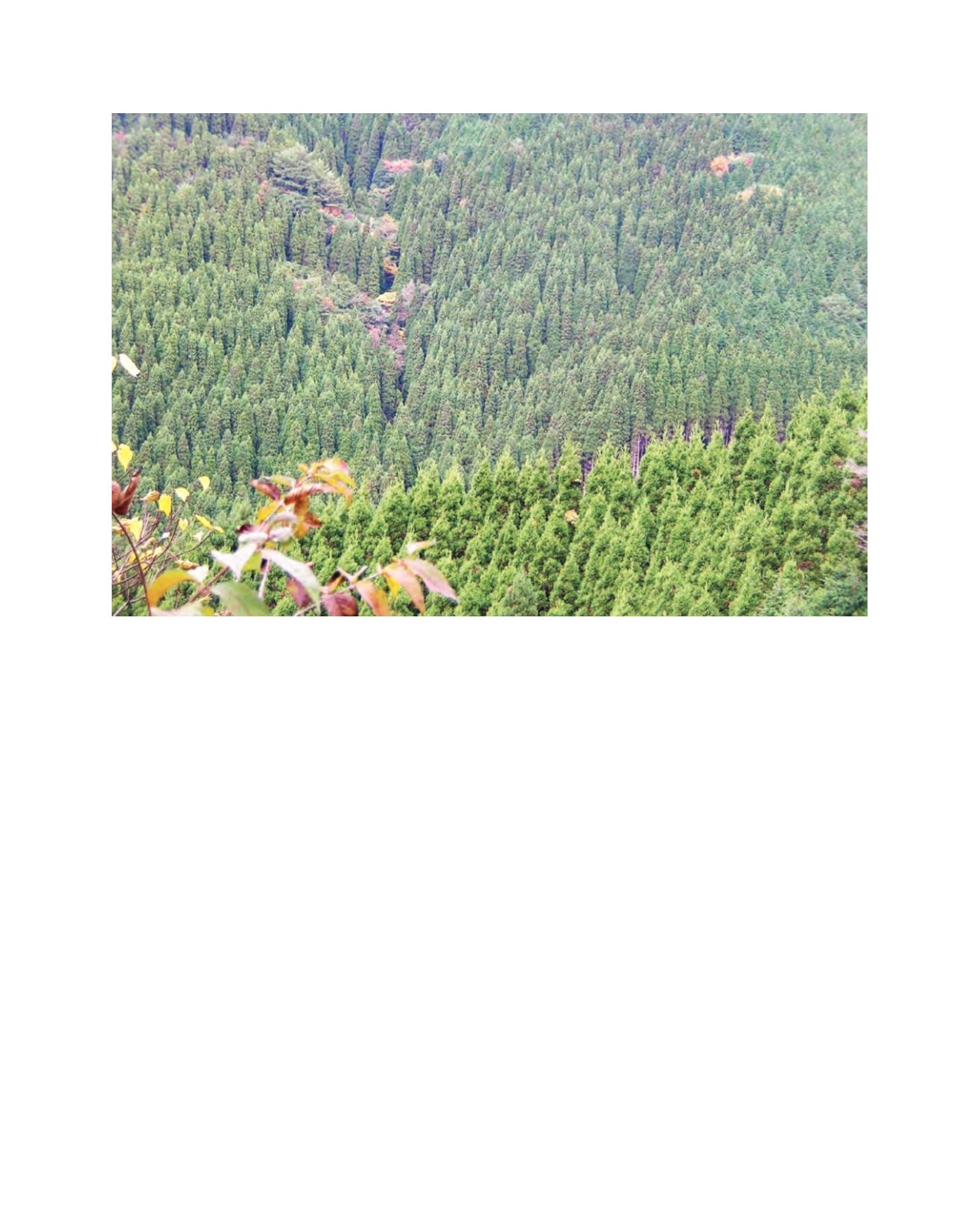

[
] 156
selective cutting to small-bloc clear-cutting in areas with high site
quality.
Initiatives are underway to ensure tree age diversification and
proper distribution in post-war reforested timberlands. As a result of
the post-war reforestation rush, tree age homogeneity is a common
issue among private timberlands throughout Japan. Together with
Sumitomo Forestry, forest owners are recommended to practise
the small-bloc clear-cutting and replanting method to rectify the
problem and to achieve more diversified tree age distribution.
Careful attention to Sustainable Green Ecosystem Council (SGEC)-
led biodiversity, especially in clear-cutting operations, will help
forestry businesses to meet market demands. SGEC is a forest certi-
fication system established in Japan and takes into consideration the
management of afforested timberlands in Japan.
Five-year Forest Operation Plans are currently required by law,
although this is scheduled for review and change in 2013. Corporate
Annual Plans are created in accordance with the budgeting system of
the company and forestry operations are based on these plans. Each
of the field offices in four locations has its own staff and plans, which
are implemented under the control of Head Office. Management
makes use of GIS tools (a combination of a mapping system and a
forest database with operational history).
Collaboration between Sumitomo Forestry and forest owners
in Hokkaido
In Hokkaido, Sumitomo Forestry owns both softwood-planted
timberlands and natural forests of mixed species. Recently, we began
clear-cutting the softwood timberlands in small blocs
as some of the trees reached the age of 50 or older. For
the second-growth natural forests, selective cutting is
practised under our Forest Operation Plans.
Sumitomo Forestry has obtained SGEC forest
certification for all of its company-owned or company-
operated timberlands. Such certification and recognition
by a third party provides solid proof and evidence to
our customers and various organizations that we are
managing forests in a sustainable manner and that the
value of our forests should be recognized.
In Hokkaido’s West Abashiri area, a total of 300,000
hectares of forests (including our company-owned
forests, national forests, and other public and private
forests) have already been certified by SGEC. The City
of Mombetsu and adjacent small communities in the area
were searching for ways to revitalize the local economy
by maximizing the value of products from the surround-
ing forest lands. Sumitomo Forestry, working together
with various groups of local people, decided to achieve
this goal by obtaining SGEC forest certification because
the certification means that our forests are managed in
a sustainable manner and that biodiversity is ensured.
Efficient use of products from certified forests
SGEC has a system similar to the Forest Stewardship
Council’s Chain of Custody system, called the
Company-owned forest in Kyushu
Source: Sumitomo Forestry
















